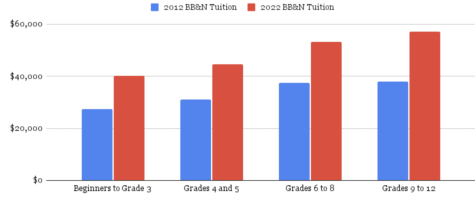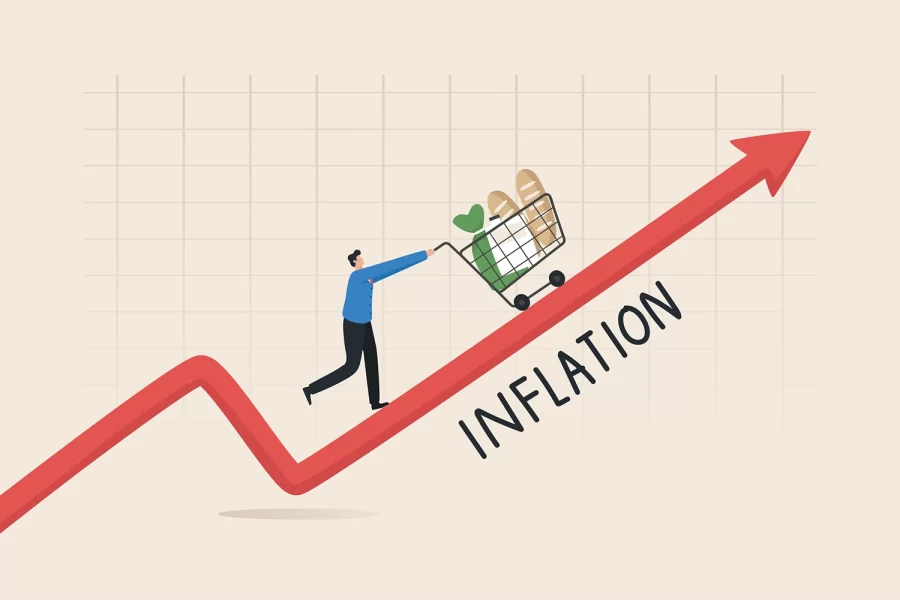Inflation prompts tuition increase
September 8, 2022
The current inflation crisis necessitated a $2.7 million increase in the budget for the 2022-23 school year which a 4.5% increase in tuition helped provide, according to a February email Head of School Jennifer Price sent to the parent community. The 4.5% increase in tuition this year is similar to the 4.9% average increase in tuition over the past ten years. The $55.1 million budget accounts for the rise in price of commodities and services each of the school’s departments requires and allows the school to compensate its faculty and staff appropriately as the cost of living climbs, Dr. Gohlmann said. Salaries and benefits comprise 70% of the school’s expenses and constitute most of the increase in budget.
“Most of what we spend our money on is our people,” Dr. Gohlmann said. “We want to do the most for our folks so that they feel valued and that we’re providing them with what they need to live.”
Though the greater budget goal required that the school adjust its tuition rates, Dr. Gohlmann said the school provided increases in its financial aid offerings commensurate with the increase in tuition so that families could continue to pay only what they could afford, she added.
BB&N tuition over the years

Cost comparisons: 1950 vs. 2022

How much is $100 from 1950 worth now?

Inflation explanation
Inflation is the reduction of the value of money, which happens when there is a broad increase of the prices of goods and services across a country’s economy. The concept of inflation is present in every economy. While the term ‘inflation’ is often used negatively, moderate rates of inflation are beneficial to an economy; it encourages higher economic activity as people feel more inclined to spend or invest their money.
However, when inflation rates are left uncontrolled, the value of a country’s currency shrinks as prices of goods rapidly increase. When this happens, a government has a variety of options to solve the problem. Most common is monetary policy, when higher interest rates are implemented to reduce demand, slowing down economic growth. Other methods include controlling money supply or enforcing higher income taxes.
Two main types of inflation are:
Demand-pull inflation: Consumer demand for goods and services grows, but the supply remains the same.
Cost-push inflation: Supply of goods and services costs more to produce, so the amount shrinks, but the demand remains the same.
Fundamentally, demand-pull inflation and cost-push inflation both stem from the concept of supply and demand. While in demand- pull inflation, prices rise due to unfulfilled consumer demand, in cost-push inflation, prices rise due to the higher costs needed to produce goods.
Sources: European Central Bank, Forbes, TheStreet, Investopedia, EconomicsHelp.org



